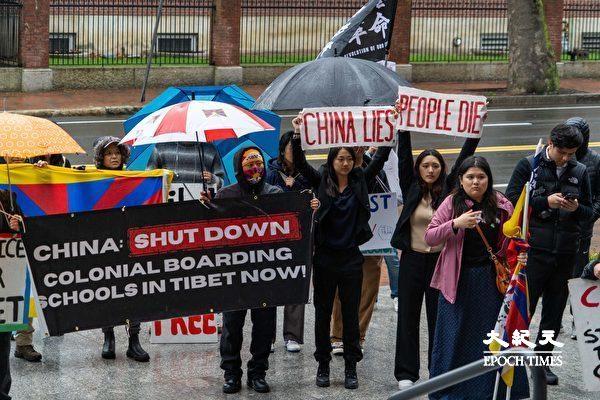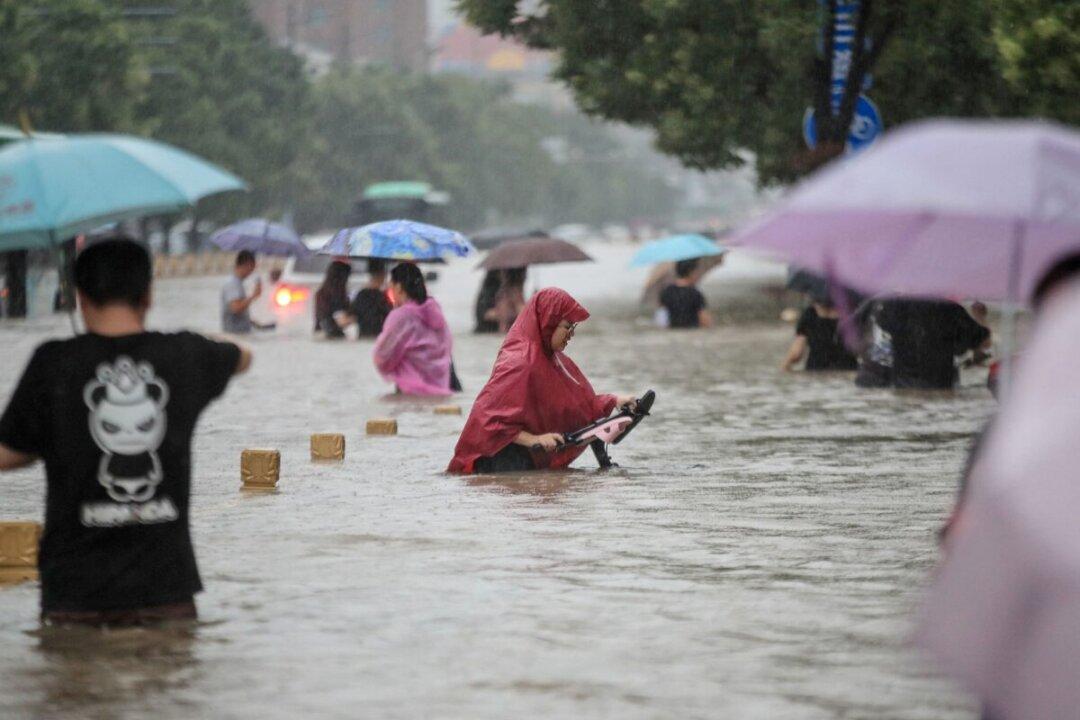After a highly criticized 15-day investigation, the Chinese Ministry of Health (MOH) concluded on April 6 that the deaths of 12 and illnesses of more than 100 children in Shanxi Province were not related to mishandled vaccines, as had been charged in an independent investigation, according to the Xinhua News Agency.
Neither the families of suspected victims, nor the individual from the Center for Disease Control (CDC) in Shanxi who leaked the information to the press, found the authorities’ disclosure acceptable or conclusive.
On March 17, China Economic Times had published a report based on findings collected during a six-month investigation in which 36 victims and their families were interviewed. Evidence of the mishandling of vaccines by manufacturers in Shanxi was also reported.
Wang Keqing brought the incident to light in an investigative piece. He did not curtail his investigative efforts after the article was published and recently stated in his personal blog, “To date, I have detailed documentation of more than 260 families who suspect their children were victims of the mishandled vaccines, including 16 who died. There are 151 cases and 12 deaths in Shanxi Province alone.”
In the article published in the China Economic Times, Beijing Huawei Pharmaceutical and Biotech Co. Ltd. claimed to be affiliated with the Shanxi Health Bureau and to have a monopoly on vaccine distribution and supplies in Shanxi. During the period from Jan. 1, 2006 to Oct. 15, 2007, workers affixed labels which read “Exclusively for the Shanxi CDC” on vaccine packages.
They were required to work in the corridor of the newly constructed CDC building which had not yet received inspection approval. During that time, the vaccines were exposed to temperatures between 20 degrees to 30 degrees Celsius and were under direct sunlight for four, five, or even up to 10 hours. They were then delivered throughout the Province by trucks with defective air conditioning systems.
The vaccines—which did not meet quality control standards—should have been destroyed. Not only were they not destroyed, most were administered to people between 2006 and 2008, and some were even administered as late as March of 2009, according to the report.
After the disclosure, the Shanxi Provincial Government admitted on March 22 that the Provincial CDC and the vaccine supplier violated certain guidelines, but they denied that the vaccines were unsafe.
Li Wenyuan, the former director of the provincial CDC, cooperated with the vaccine producer. He is charged with embezzling 270,000 yuan (US$39,600) from the company’s 500,000 yuan (US$73,300) safety guarantee deposit.
Chen Tao’an was employed by the Shanxi CDC. He had broken the story to Wang and had reported the questionable vaccines to authorities in early 2007. He was subsequently arrested, detained, removed from his job, and put on cleaning duty.
Inadequate investigation
State-run Xinhua reported the MOH’s findings: “Vaccines in the province, including those supplied by Huawei, as investigations showed, were all up to standard in terms of safety and efficiency.”
Chen questioned the thoroughness of the investigation and its conclusion.
He cited Regulation 64 titled, “Vaccine Distribution and Vaccination Regulations.” It states that vaccines subject to temperature abuse during storage or transportation, or due to exposure to heat or direct sunlight, should be destroyed because their efficacy or safety cannot be substantiated by qualitative evaluation.
He pointed out that the MOH investigative unit only came into existence as of November 2008. Vaccine sampling began in early 2009, but only vaccines produced as far back as November 2008 could be identified. Chen questioned the relevance of the sampling system: “How could these results possibly represent vaccines produced from a couple of years ago?”
Wang Mingliang, who suspects his child died from the vaccine, also questioned the MOH investigation. “[The report] did not even mention the heat-exposed vaccines. Their conclusion was based on an investigation of vaccines in regulated conditions. We are talking about the vaccines that were exposed to heat.”
Superficial investigation
According to Xinhua, the MOH investigation was based mainly on the previous medical records of 15 affected children and their current health conditions.
Chen provided details in a blog. “None of the experts from the MOH or the provincial investigation team revealed their identity during their interview with the victims and victims’ families in Shanxi Province.” He asserts this may have resulted in a majority of the victims not daring to talk freely about their circumstances.
Wang also expressed his dissatisfaction with the investigation. He spoke to one of the experts from MOH, asking if, in her opinion, vaccines exposed to heat would lose effectiveness or even become poison. “Her response was that she could not answer the question right now.”
Mrs. Sun said her daughter experienced an adverse reaction to a vaccination but was not included in the investigation. “They seem to just be fooling around and calling it an investigation,” she said.
Li Changqin also said his child had an adverse reaction to a vaccination, and his case was also excluded from the investigation. “Local governmental officials keep calling me, asking me to stay put and just wait.”
Fidelity questioned
The MOH’s report claims that the vaccine supplier Huawei first began attaching labels to vaccine packages without approval in April of 2007. At the time, however, the company appears not to have been cited.
Chen found documentation that the CDC helped facilitate Huawei’s monopoly in Shanxi Province. The 2005 document, “Bio-products Distribution Notice,” states that the Beijing company Huawei will supply, distribute, and manage vaccines for the Shanxi Provincial CDC.On multiple occasions, the Shanxi Provincial Health Department also documented that it regulates the usage of vaccines supplied by Huawei and labeled with “Shanxi CDC Usage Only.” The endorsement also appeared in 2006, in the No. 13 document issued on April 6, 2006 by the Provincial Health Department.
While the MOH states that Huawei was involved in attaching unapproved labels in April of 2007, the company’s operations in violation of policy appear to have begun as early as 2006, according to Chen.
Chen maintains that since 2006, questionable vaccines from Huawei have been administered, affecting more than 20 million people in Shanxi.
Read the original Chinese article.



